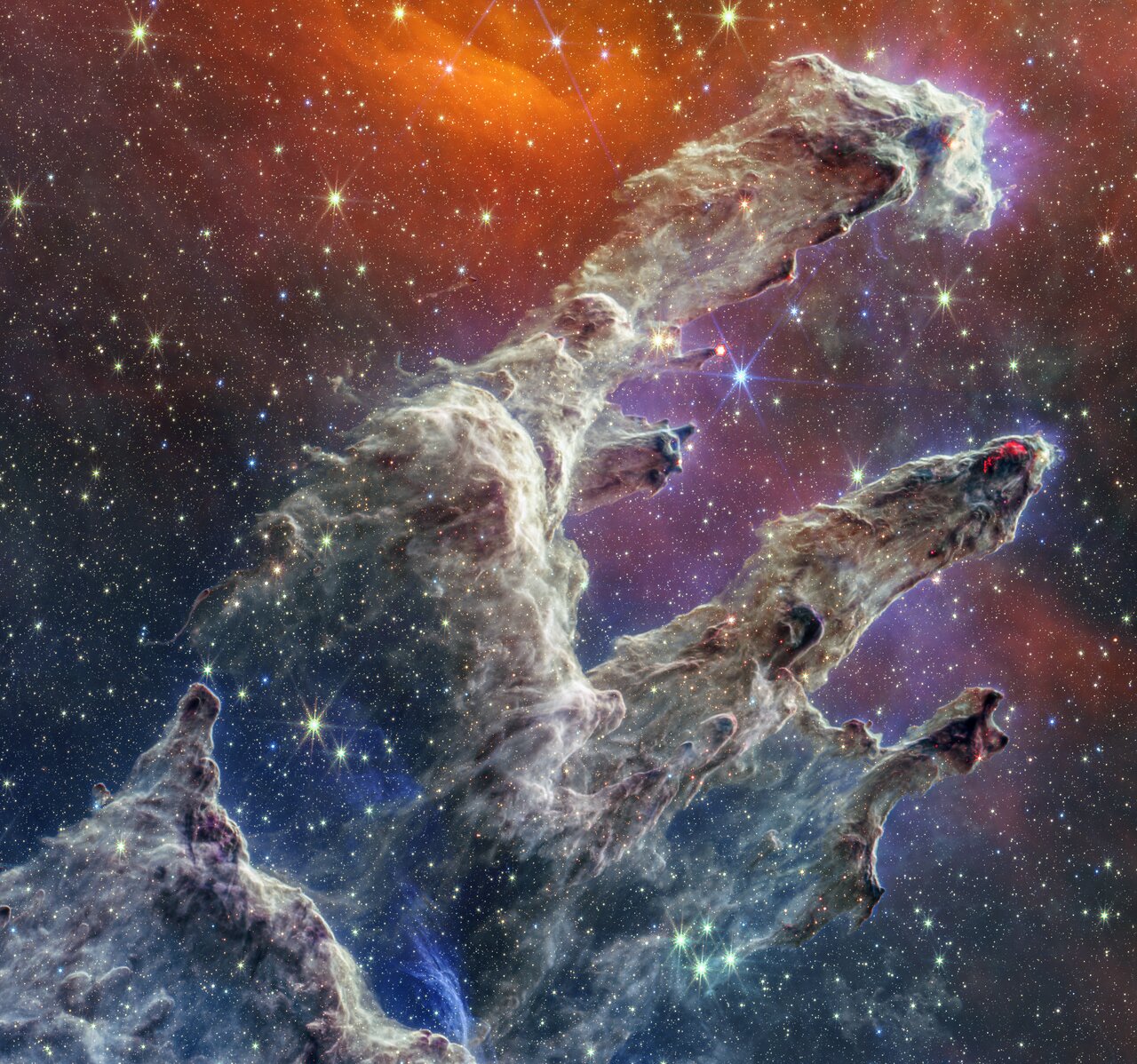Caroline Herschel Medal awarded to acknowledge her leading role as European Principal Investigator on the Mid-Infrared Instrument (MIRI), one of the four main instruments on the James Webb Space Telescope (JWST).
The Caroline Herschel Medal is a joint award from the Royal Astronomical Society (RAS) and the German Astronomical Society (Astronomische Gesellschaft, AG).
The Medal was launched in 2021 by the UK Government in honour of former German Chancellor Angela Merkel. It commemorates late eighteenth and early nineteenth century astronomer Caroline Herschel, recognising her legacy, and the scientific links between Germany and the UK. It is awarded to outstanding women astronomers, alternating between the two countries each successive year.
Unique capabilities
For over two decades Professor Wright has led the European contribution to JWST, leading a consortium of institutes across Europe that developed MIRI in partnership with NASA's Jet Propulsion Laboratory.
Webb is the most powerful telescope ever launched into space and the spectacular images and scientific data coming from MIRI are redefining our understanding of the cosmos.
MIRI features many unique capabilities, boasting a spectrograph to break up light into its constituent wavelengths, a coronagraph to block starlight and look at fainter objects next to stars, and a camera capable of taking stunning pictures on the Universe.
UK ATC Director
Alongside her work on JWST Professor Wright has been Director at UK ATC, since 2012. Leading on some of the world's foremost astronomy projects including:
She was also awarded a CBE in 2022's New Year Honours List for her contributions to astronomy through international missions.
Gillian Wright, Director at UK ATC, said: “I am deeply honoured to be awarded the Caroline Herschel medal and it is very special to be the first UK recipient. From the very beginning MIRI has been an international collaboration and I'd like to thank the whole team for their support and many contributions."
Innovative astronomy projects
Professor Mark Thomson, Science and Technology Facilities Council Executive Chair, said: “Gillian is a very worthy winner of this prestigious award for her exemplary work and leadership role on JWST. Since it started science operations last year the images and data from MIRI have already expanded our understanding of the Universe. Alongside MIRI she is also leading some of the most exciting and innovative projects in astronomy as director at STFC's UK Astronomy Centre in Edinburgh."
Global scientific leader
RAS President Prof. Mike Edmunds said: “Gillian is a global scientific leader in astronomy. She worked tirelessly to bring MIRI to fruition, and it is now delivering unparalleled advances in our scientific understanding of the universe. On behalf of the Royal Astronomical Society, I would like to offer her my warmest congratulations as the first UK winner of the Caroline Herschel Medal."
AG President Prof. Michael Kramer said: “Seeing the images produced by MIRI on JWST is truly impressive. Recognising Gillian as a leader making these possible is not only timely but also entirely appropriate. We are extremely happy that Gillian is the second winner of this joint award, and in name of the AG, I congratulate Gillian not only on the award but also on her great achievements."
Awe-inspiring images of space
Dr Paul Bate, CEO of the UK Space Agency, said: “Huge congratulations to Professor Gillian Wright, on behalf of myself and the entire UK Space Agency, for this well-deserved achievement.
“Gillian has dedicated more than 20 years of her life to the development of MIRI, which has helped the James Webb Space Telescope bring us some of the clearest, deepest and most awe-inspiring images of space ever seen. These images, and the people that made them possible, will be remembered for decades as scientists continue to analyse their data, shedding light on the most fundamental questions of the universe, and providing inspiration for the next generations of scientists, engineers and space professionals."
